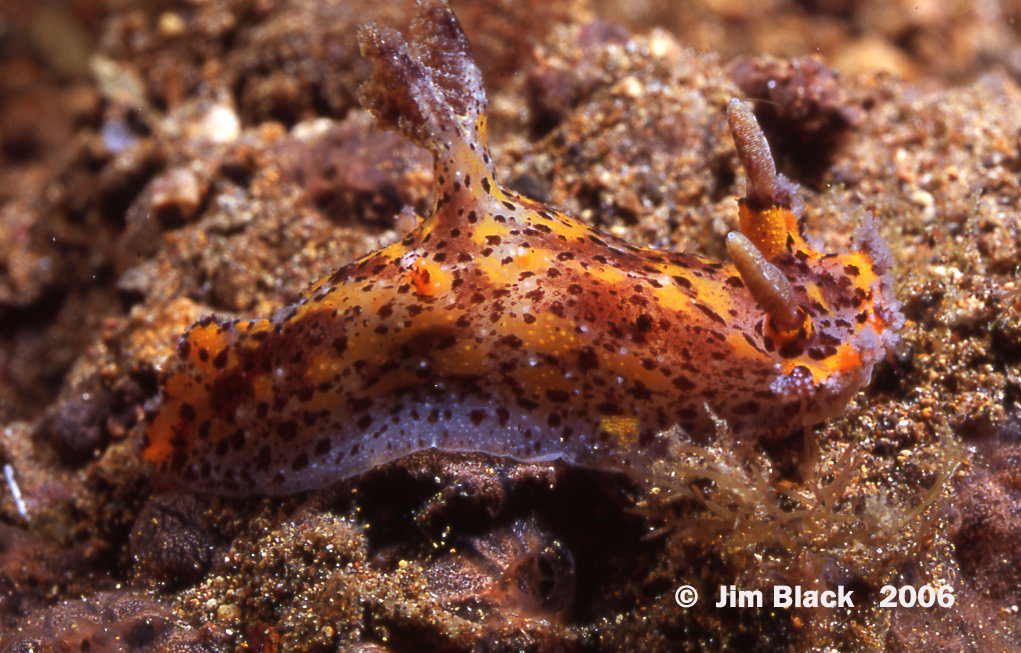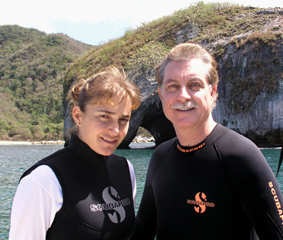 |
Plocamophorus tilesii
Photo courtesy of Jim BlackAnilao,Batangas, Philippines
March, 2006
Plocamophorus tilesii Bergh, 1877
Members of the genus Plocamophorus are large, colorful and ecologically interesting. Here, Jim, of recent Tambja blacki fame, has captured, Plocamophorus tilesii. This orange animal with black specks and spots scattered over the body is similar in coloration to Plocamopherus imperialis and an undescribed species of Plocamopherus . The latter looks completely different as a juvenile, as shown here in another of Jimís pics .
P. tilesii is most easily distinguished from the other species by the series of large spots across the frontal veil, at the base of each papillae. P. imperialis is more uniform in color with very small specks, and our new Ploc. species (which we hope to hear the new name soon) has much fewer large black spots surrounded by a white halo.
The fascinating feature about members of this genus is their ability to produce light, particularly when disturbed. The function of the light production is up for debate, maybe for mate recognition, or maybe for defense to scare a predator off. In the photo of Jimís juvenile undescribed Plocamophorus you can clearly see the large light producing glands which appear as a series of papillae along the dorso-lateral ridge. They are the pink appendages with the white specks. How the light is produced, whether by light emitting bacteria or some other process is unknown. The largest might be considered an extra-branchial appendage also.
Noteworthy also is the vertically flattened tail which functions as a paddle used in swimming movements to escape disturbances.
Like other triophids these species feed on branching hydroids. All of these species range throughout the western Indo-Pacific.
Gig Harbor, Washington
April, 2006
Jim Black in cockpit
 |
Jim is currently on medical leave with US Airways after 27 years as a pilot..., flying Captain on an Airbus 330 Internationally. Diving since 1970...with over 5200 dives logged. Shoots Nikon F4s in housing and Nikonos RS. Jim's photography has been featured in a number of books and publications including Helmut Debelius' Nudibranchs and Sea Snails of Gosliner, Behrens and Williams Coral Reef Animals of the Indo-Pacific. A photo of Jim petting a shark in "Sleeping Shark Caves" off Isla Mujeres Island, Mexico, taken by Amy Foster his significant other, recently appeared in Dave Behrens' Diving Guide to Cozumel, Cancun & The Riviera Maja. Send Jim email at jim.black1@comcast.net |
March 2005

Ali Hermosillo and Dave Behrens
Author:
Pacific Coast Nudibranchs
Send Dave mail at dave@seachallengers.com
|
